


Eighth Regiment Connecticut Volunteers
Company A, Inc.
155th Anniversary "The Battles for Newbern"
March 10-12, 2017
Kinsey Farm
Dover, NC.

Camp of the Eighth Conn. Vols.
near Newbern, North Carolina
March 12, 1862
Dear Friends,
I am writing to your from the banks of the Neuse River near Newbern. We are with the Burnside Expedition, and arrived in this environs mid day on Thursday. We traveled south along the east shore of the Chesapeake Bay, and took the long bridge into the Norfolk area, then passed through the Dismal Swamp, and finally dropped down into the Newbern area tide water of the Neuse and Trent Rivers and Pamlico Sound.
We came to the battlefield which was a long straight line of Rebel works, stretching from the river inland to the west to a railroad and a swampy brook. We were arrayed in line of battle and went forward, thence were ordered to the left, thence along the railroad itself which pierced the rebel lines at a place defended by militia. They caved and let us swarm behind the lines into a brickyard, from where we proceeded to roll the rebel lines up to the right, being the east. The rebels were driven from the works, and were routed towards the town in a fine fashion. Our flags were posted on the works.
We took the time to walk the lines, and visit the points on the field, including the railroad culvert over which we passed, and then walked the many redoubts to the west of the railroad, from which we could see that they were well positioned, but outnumbered by us.
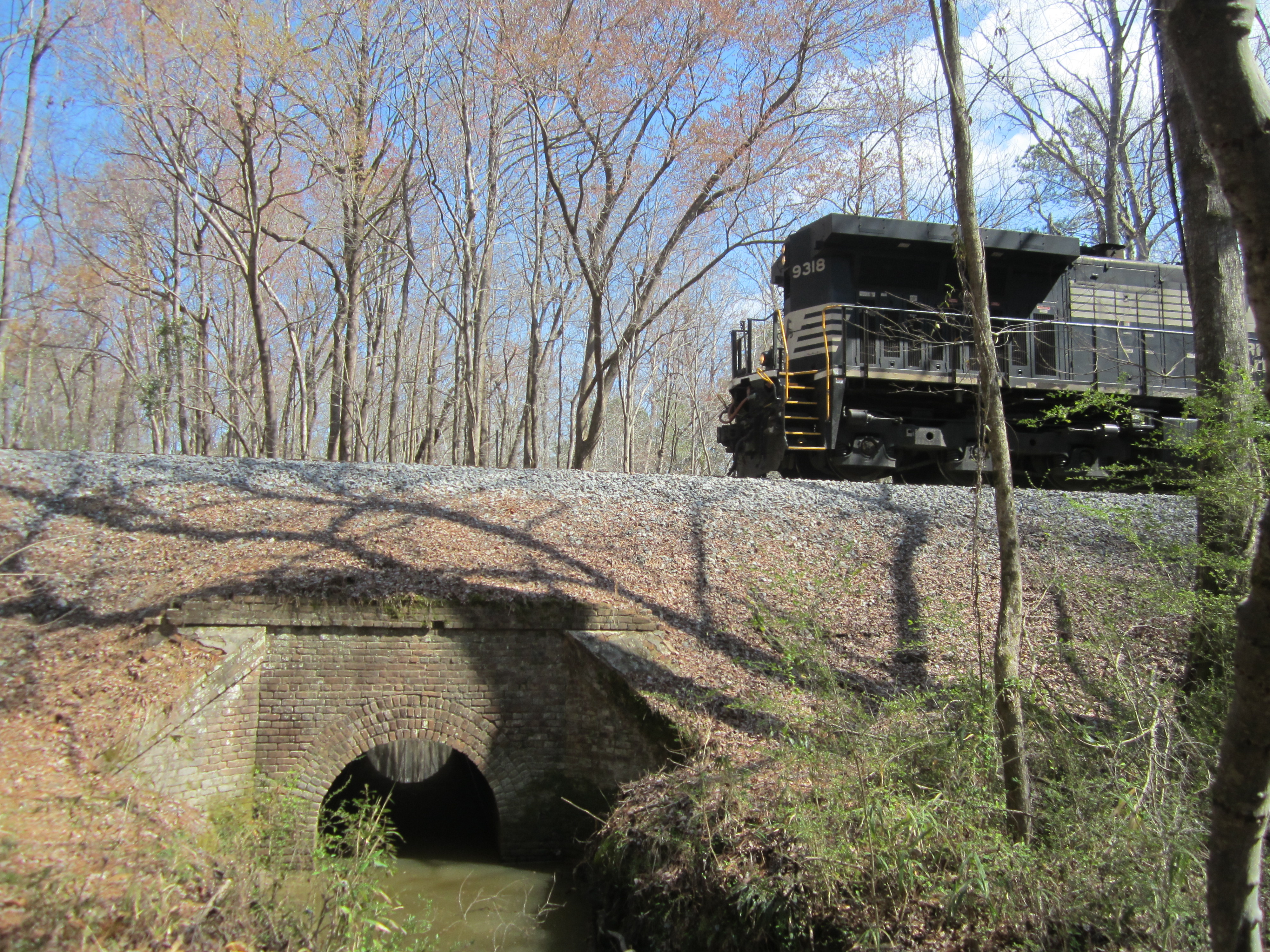
After walking the grounds, we determined to take the cars to Bogue's Bank and Fort Macon, some 39 miles to the south. In our travels, we covered the same route of march that lead us to the siege of the Fort after the battle of Newbern. On our way, we passed over Slocum's Creek, the point on the Neuse River that the Expedition debarked in the night before the battle.
Arriving at the Fort, we proceeded inside, and right to the walls. We were greeted by a good stiff onshore breeze, and could see the whitecaps coming on the beach in formation several ranks deep. Yet, the sun was bright, and the day pleasant for us New Englanders. We toured all the nooks and crannies of the Fort, and found it to be remarkably sustained. There were large groups of students coming through for tours by the staff, and all was well received. After leaving the Fort, we took a short walk to the point on the bank. We would see Carolina City and Morehead City, and Beaufort over the water, and thought it may be cold and wet business to have to cross in the boats today.

We left the Fort, the Bank, and the shore, and headed back towards New Bern. We proceeded to the west, on the south bank of th Trent River out to where the land is still flat as a billiard table, but the space opened up to larger and larger plantations and farms. We passed over Bachelder's Creek, and noted the place, the plot, and the bridge for later reference.
We were directed into the Kinsey Farm, found ourselves at the headquarters, and were directed along a tree line about a half mile to where the Union camps were forming in rows going into a forest of long leaf pines, all planted in rows just wide enough to accommodate a row of tents, a street, and a row of tents. Quite a sublime camp if I ever saw one. We picked the next available vacant row of trees, and put up our common tents. The place for the cook fires was declared to be out of the trees, on the field, really nothing but sand. Placing our fire there it was evident that the wind would keep the fire hot, and the trees would shelter our tents from the wind. The wind was to be a factor throughout the entire excursion.
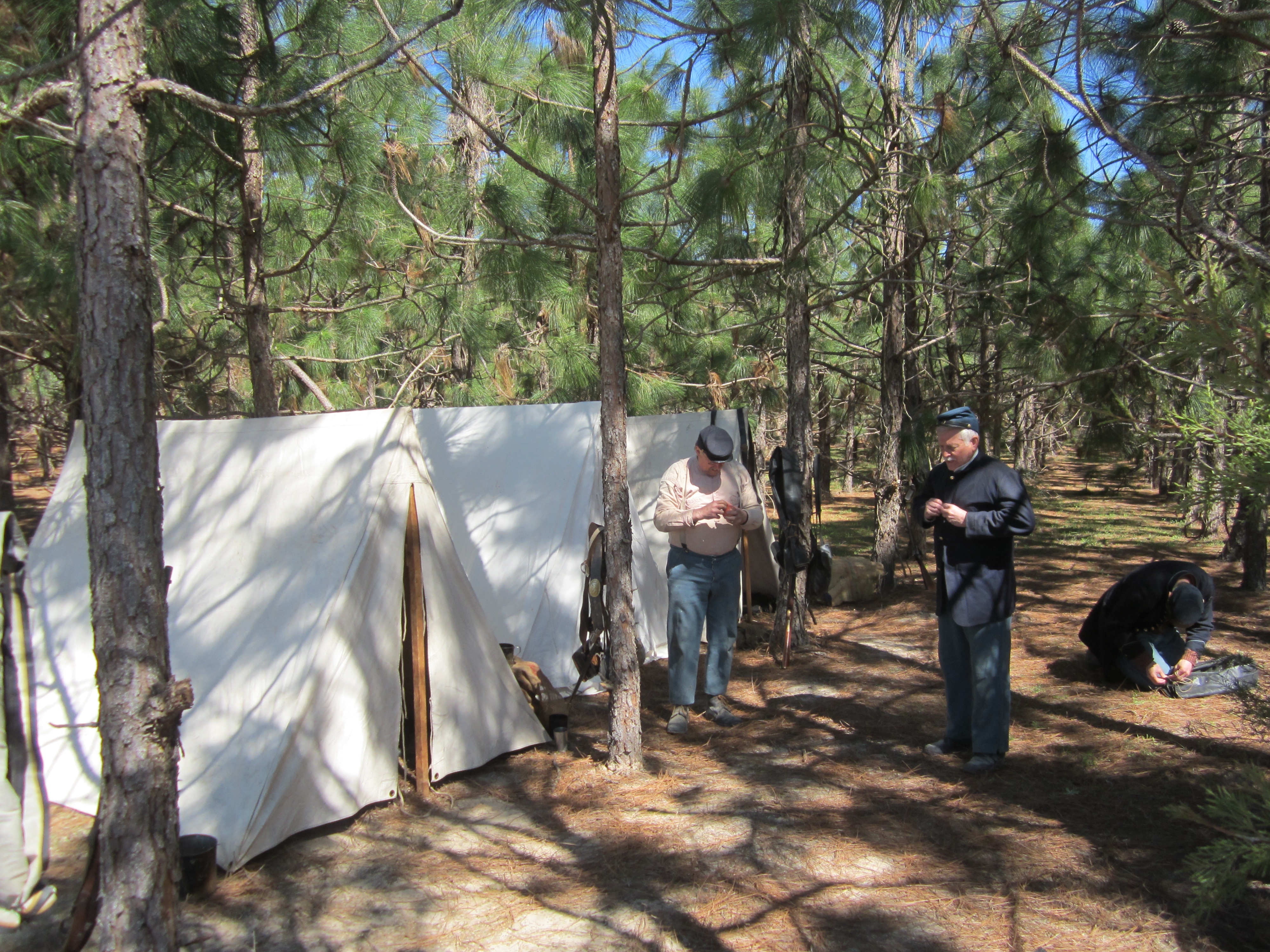
The first fire was lit after dark, and Hal proceeded to try to shuck his four dozen oysters procured from the waters. Hal did break open several, and the raw feast was had. They were excellent, simply delicious. We obliged him to shuck in the daytime as to avoid injury, and so he arrayed a pile of them on a grate over the fire for roasting until they opened a bit. And soon they did give up, open, and such was the treat shared with all. Big thanks to Hal for his oyster gathering skills and talents. In the morning Hal shucked the remainder into a stew pot, and thus commenced the preparation of a great oyster stew that we would have for supper later that night.
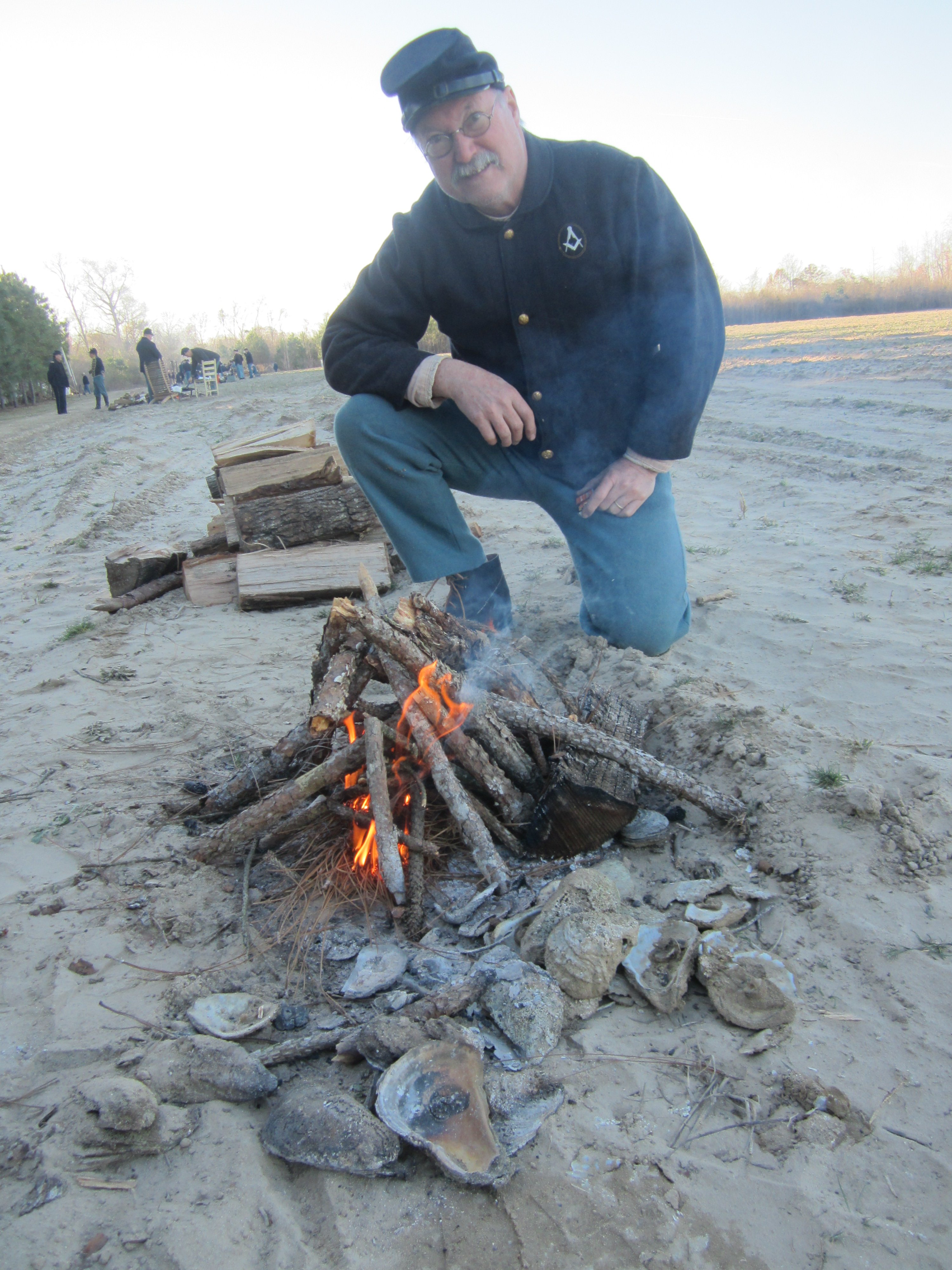
Around noon, we were marched to a dress parade. There was a joint parade of Union and Confederate troops facing each other. It was a memorial service of a fallen sergeant who had recently died on the field in his boots, inspecting his men. It was a moving ceremony, which brings the camaraderie to us all, and reminds us of our invisible bonds, and our worldly life. The idea of doing everything you do as best as you can should always be our goals. This event was dedicated to doing it all right for "Bob".
In the late afternoon, we were formed to march on the Rebel lines culminating with Fort Thompson. We were combined and supported the 99th New York Vols, under Capt. Larry McCauley. The 99NY was originally there at the Fort. They were designated the color company, and our boys help in carrying and guarding the colors throughout the battle. We were put in line of battle, then ordered forward, closing the great distance between our stepping off and the earthworks that spread for a mile in either direction. We guided on the center of the works. We received barrages of artillery shells, then canister. Then the musket fire opened on us and it was a storm of bullets. Yet, on we advanced, determined for the objective, and eager for the prize.
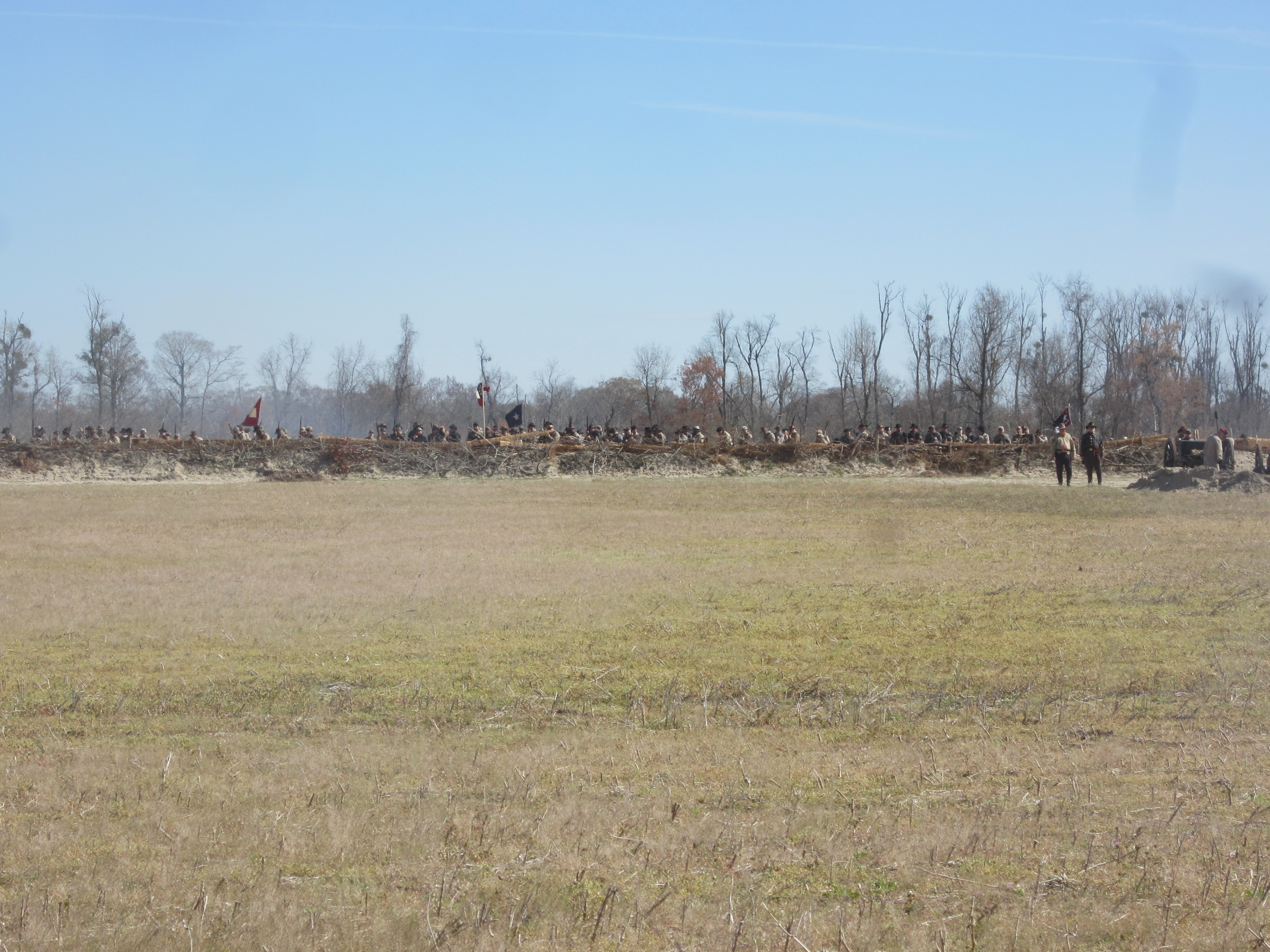
Upon closing to the works, the rebels seemed to melt away some, and we could see them streaming to the rear, in spite of their orders. Our color guard made the parapet, and planted our flags there, shaking them out in the face of the enemy. The color bearer and I raced forward to the main flagpole of the fort, untied, and lowered the Confederate flag, and ran the Stars and Stripes up that pole as fast as we could. Cheers went up all along the lines, and we all saluted our nation's flag. That was pretty much the end of resistance, as our lines advanced as fast as they could trying to catch the retreating Rebels, but they had more to lose and made good time. Soon we heard trains rolling away, and expect many of them took to the cars.
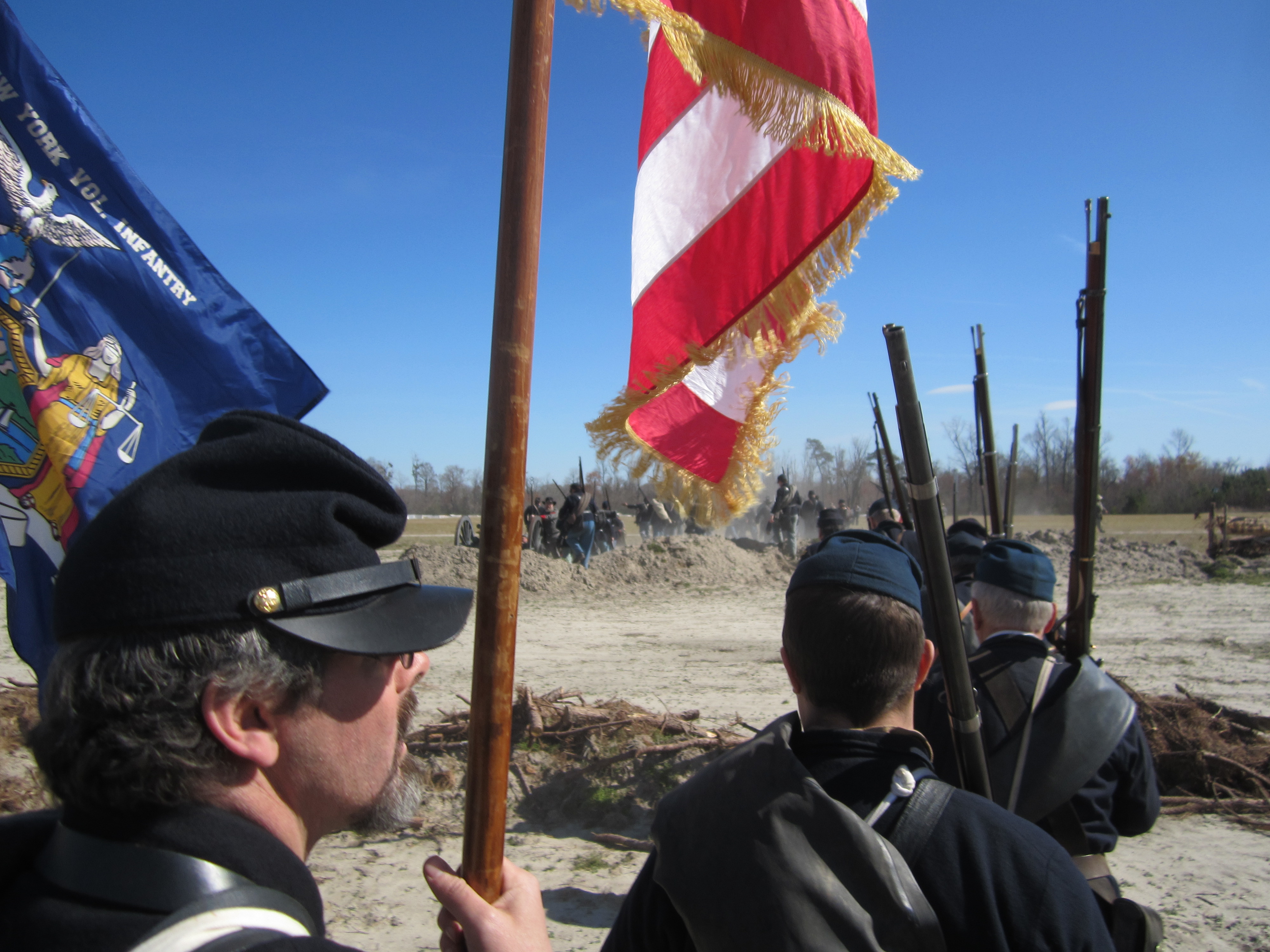
We returned to camp after the fight, and had a fine supper of oyster stew. Hal had white potato, sweet potato, carrots, bacon, mushrooms, and of course the oysters. It was good and hot, and hit the spot. We did sit and talk around the fire some, played one and a half rounds of BearTrap, and then gave it up for our beds and the temperatures plunged into the night.
Sunday morning dawned, and we were up again to get the fire going. It was frosty cold and looking like snow any minute. We pulled down all our canvas, and packed it up for the wagons. As soon as all was in order, the snow indeed started and came strong for hours. We were left huddling around the fire, or fending off the wind under the trees, but the time seemed to stand still. Shivering became the order of the day. Yet, it was quite comical to see the southern soldiers all gawking at the snow, like it was a blizzard, when in fact, it barely wet the ground, or stuck to a tree branch. Still, great coats, wool gloves, and thick hats were very popular, and the fire wood burned at a greater rate than any time before.

About noon, orders came to form in line of battle, which we did just to move around. The Eighth Conn. Vols. were the color guard, and the 99NY assisted. We were ordered forward, and we stepped off over rough ground for about a quarter mile. We came to our works this side of Bachelder's Creek, and manned the works, colors to the rear. The left wing was put out as skirmishers well to the front of our line, and soon, we could see the rebel line of battle through the snow coming for us in force. our artillery opened on them with some effect, then the skirmishers opened on them and held them for a time, but being outnumbered, the rebel line just kept coming, and pushed in all the skirmishers. They rallied on the center, proceeded over the bridge, and into our works. They tore up the brigade planks as they came. At this point the front was clear, and we opened on battalion front, taking a good bite out of the enemy. But still they kept coming.

They had numbers on their side, and our garrison was pushed to the limit. They were then on the works, over the works, and fighting hand to hand. It was ordered to retire the colors before they were captured, and that order was gladly obeyed. We ran a good distance, then were ordered to halt, and form on the colors once more. Given that the rebels were in our fort, they saw no real need to pursue us and come into the face of our muzzles. Thus ended the actions, so we marched for Newbern once more, loaded the cars, and took transportation away to the north. Our thanks and gratitude to the Rains Brothers Post of the Sons of Confederate Veterans for organizing from the 155th Anniversary and running a quality event well worth the time and travel to be in North Carolina tide water in the spring time, or almost.
Lincoln & Liberty,
Brother Seth


 E-Mail Us for More Information!
E-Mail Us for More Information!
Eighth Regiment Connecticut Volunteers, Co.A, Inc.
8cv@comcast.net

















